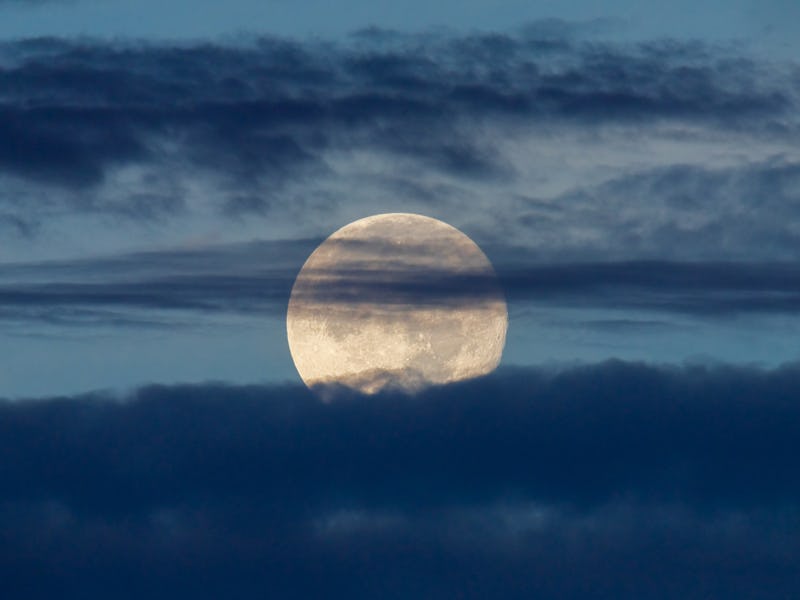You Need to See the Only Blue Moon of 2023 This Week
The only Blue Moon of 2023 rises soon, with Saturn appearing nearby.

The month of August ends on a bright note: the first and only Blue Moon of the year.
The Moon’s phases are intrinsic to the human experience. It has a 29.53-day cycle, which creates or coincides with other patterns like the tides, human menstrual cycle, and the calendar months. Naming, counting, and watching Full Moons is an ancient practice that carries into today.
When a Full Moon appears at the beginning of a month, as it did on August 1, it leaves wiggle room for another Full Moon to fit into the end of the same month. This is what’s known as a Blue Moon.
When can I see the Blue Moon?
The only Blue Moon of 2023 will appear on the night of Wednesday, August 30. It rises shortly after the end of evening twilight.
The August 1, 2023 Full Moon over the Manhattan skyline.
If you don’t have clear skies forecasted for Wednesday, don’t worry. “The Moon will appear full for 3 days around the peak of the full Moon, from Tuesday night to Friday morning,” NASA officials wrote on Thursday.
Does the Moon turn blue?
The Moon will look particularly spectacular, but it won’t take on a new color.
The Blue Moon will be a supermoon, meaning it will look bigger than usual. The Moon travels in an elliptical orbit, or elongated circle, around Earth each month, which changes the Moon’s distance from Earth. When the Full Moon phase coincides with the Moon positioned closer rather than farther away, the Moon appears larger in the sky.
The upcoming Full Moon will almost exactly line up with perigee, the nearest point to the Earth along its orbit. This will happen Wednesday morning at 11:55 a.m. Eastern. The Blue Moon will undoubtedly be a supermoon.
A Chance to See Saturn Too
When the Blue Moon rises, it will be accompanied in the sky by Saturn. According to NASA, the ringed planet is “just a few days from its closest and brightest for the year.”
As the Blue Moon prepares to set below the horizon on Thursday morning, Saturn will appear on the lower right of the Moon. Venus, often dubbed the morning and evening star for its appearance during twilight, will also shine in the sky. And so will Jupiter, though you’ll have to look much farther up from the horizon — 66 degrees above the southern horizon — to catch it.
When is the next Full Moon?
The Blue Moon is the last Full Moon of summer for the northern hemisphere (or winter in the southern hemisphere).
The next Full Moon will appear on Friday, September 29. It will also be a Supermoon There won’t be another Blue Moon until 2026,